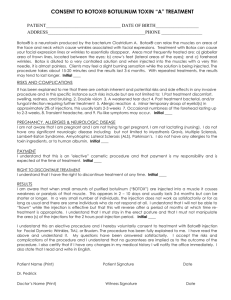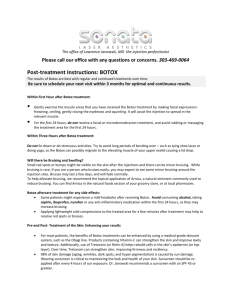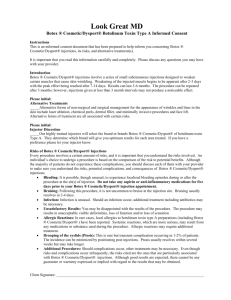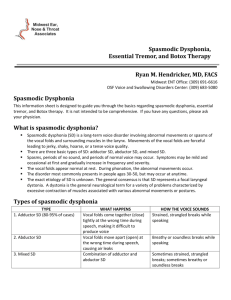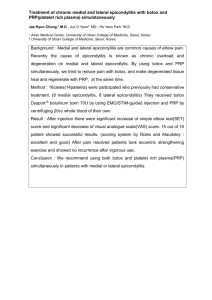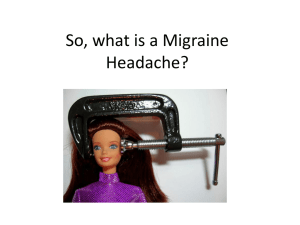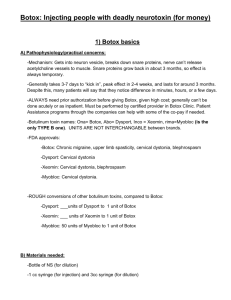to view the abstract of Dr. Jafri`s work with - Custom
advertisement
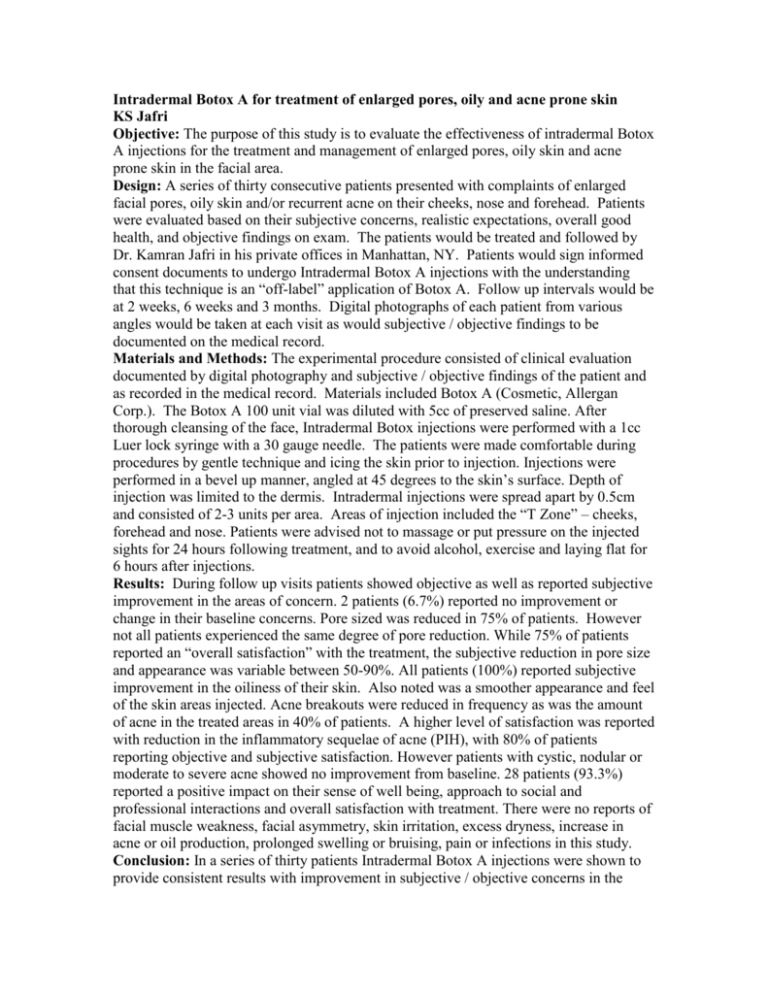
Intradermal Botox A for treatment of enlarged pores, oily and acne prone skin KS Jafri Objective: The purpose of this study is to evaluate the effectiveness of intradermal Botox A injections for the treatment and management of enlarged pores, oily skin and acne prone skin in the facial area. Design: A series of thirty consecutive patients presented with complaints of enlarged facial pores, oily skin and/or recurrent acne on their cheeks, nose and forehead. Patients were evaluated based on their subjective concerns, realistic expectations, overall good health, and objective findings on exam. The patients would be treated and followed by Dr. Kamran Jafri in his private offices in Manhattan, NY. Patients would sign informed consent documents to undergo Intradermal Botox A injections with the understanding that this technique is an “off-label” application of Botox A. Follow up intervals would be at 2 weeks, 6 weeks and 3 months. Digital photographs of each patient from various angles would be taken at each visit as would subjective / objective findings to be documented on the medical record. Materials and Methods: The experimental procedure consisted of clinical evaluation documented by digital photography and subjective / objective findings of the patient and as recorded in the medical record. Materials included Botox A (Cosmetic, Allergan Corp.). The Botox A 100 unit vial was diluted with 5cc of preserved saline. After thorough cleansing of the face, Intradermal Botox injections were performed with a 1cc Luer lock syringe with a 30 gauge needle. The patients were made comfortable during procedures by gentle technique and icing the skin prior to injection. Injections were performed in a bevel up manner, angled at 45 degrees to the skin’s surface. Depth of injection was limited to the dermis. Intradermal injections were spread apart by 0.5cm and consisted of 2-3 units per area. Areas of injection included the “T Zone” – cheeks, forehead and nose. Patients were advised not to massage or put pressure on the injected sights for 24 hours following treatment, and to avoid alcohol, exercise and laying flat for 6 hours after injections. Results: During follow up visits patients showed objective as well as reported subjective improvement in the areas of concern. 2 patients (6.7%) reported no improvement or change in their baseline concerns. Pore sized was reduced in 75% of patients. However not all patients experienced the same degree of pore reduction. While 75% of patients reported an “overall satisfaction” with the treatment, the subjective reduction in pore size and appearance was variable between 50-90%. All patients (100%) reported subjective improvement in the oiliness of their skin. Also noted was a smoother appearance and feel of the skin areas injected. Acne breakouts were reduced in frequency as was the amount of acne in the treated areas in 40% of patients. A higher level of satisfaction was reported with reduction in the inflammatory sequelae of acne (PIH), with 80% of patients reporting objective and subjective satisfaction. However patients with cystic, nodular or moderate to severe acne showed no improvement from baseline. 28 patients (93.3%) reported a positive impact on their sense of well being, approach to social and professional interactions and overall satisfaction with treatment. There were no reports of facial muscle weakness, facial asymmetry, skin irritation, excess dryness, increase in acne or oil production, prolonged swelling or bruising, pain or infections in this study. Conclusion: In a series of thirty patients Intradermal Botox A injections were shown to provide consistent results with improvement in subjective / objective concerns in the majority of the patients followed. Patients reported the greatest satisfaction with reduction in oily skin (100% subjective satisfaction). The majority of patients felt satisfaction in the reduction of pore size and pore appearance, however the degree of improvement was variable. From a clinical standpoint, patients with thick, sebaceous skin and large pores experienced less satisfying results than patients with mild-moderate pores and thinner skin. In addition treatment of pores was subjectively more effective along the cheek and forehead than on the nasal dorsum / tip. Based on the clinical results of this study, Intradermal Botox may serve as an adjunctive therapy for mild, inflammatory acne and the sequelae (PIH) associated with it, but should not be considered first line therapy. Further clinical studies are required incorporating histological analysis of the skin treated with Intradermal Botox as well as high quality digital photos to help fully assess the clinical effectiveness and mechanisms of action of this exciting new application of Botox A. In addition, further studies to investigate the effect of varying concentrations of Intradermal Botox will further help our understanding of the clinical applications of this treatment modality and perhaps help explain why patient variation exists in pore reduction.
